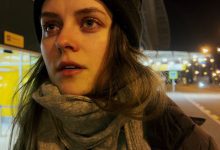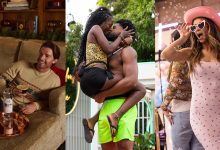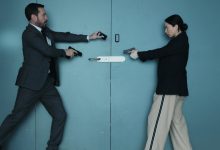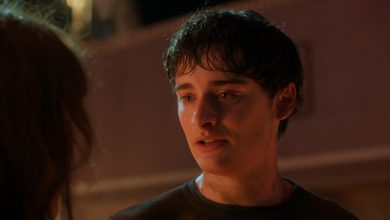Renée Zellweger on Her Directorial Debut ‘They’: ‘A Passion Project’
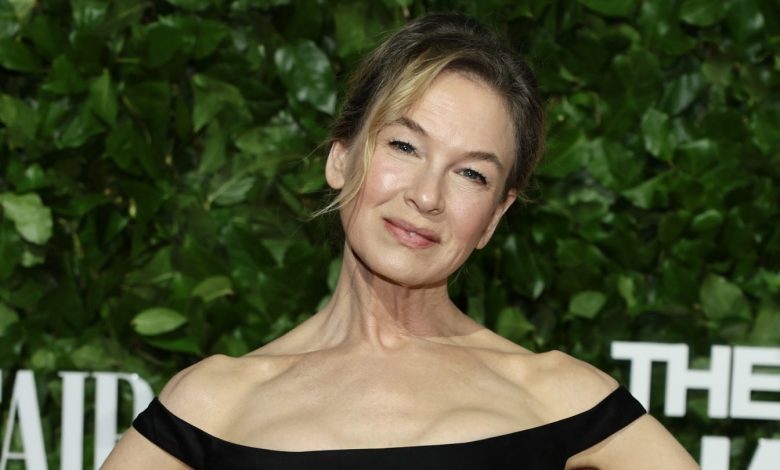
In her first interview as a filmmaker, Renée Zellweger is as gracious as ever.
“I don’t think that directing was a personal ambition in and of itself,” the Oscar-winning actress tells The Hollywood Reporter. “I always thought that if there was some organic calling to tell a story and I felt that it was the right fit, then I’d probably love to do it and give it a shot.” Only if it felt necessary, she adds: “Not just for the sake of having the experience, you know?”
Texas-born Zellweger has, of course, been a star of the screen for years. She has captivated us in the likes of Jerry Maguire (1996), Chicago (2002) and more recently, the film that gave her a hard-earned second Academy Award: the Judy Garland biopic Judy, in 2021. For many audiences, however, she’ll be best known as the charmingly imperfect Bridget Jones, a character she returned to earlier this year in the global box office hit Mad About the Boy.
What she hasn’t yet publicly spoken about is the project she worked on in between those movies. In her trailer on the Bridget Jones set, she says, and in between press tours, Zellweger and her production company Big Picture Co. were working with a group of talented animators to create a nine-minute short — Zellweger’s directorial debut — titled They.
In the hand-drawn 2D line animation They, which had its world premiere at Edinburgh International Film Festival on Aug. 16, a town is overrun by grumbling citizens caught in clouds of complaint. That is, until a hopeful hero and his trusty dog hatch a plan to encourage a return to better days. When things appear to catastrophically backfire, a surprising twist unites the masses in solidarity.
They is a reaction to the wealth of toxicity polluting the world. Zellweger pokes fun at online conspiracy theories, a sea of hate on social media, and all-round terrible team morale among us humans at the moment. “It’s just so sad,” Zellweger tells THR, “the decline of social discourse, how it seems that we all have these opinions about one another. Conversation seems to have left the building.”
The short is also a surprisingly intimate project, sprinkled with anecdotes and gentle nods to Zellweger’s personal life and the wider team’s, too. A dedication at the end to Dylan, Ellie, Chester, Betty and Grady refers to the late pets of Zellweger and her producer Tora Young. In fact, animation director Paul Smith drew everyone’s pets next to their names for the brilliantly crafted end credits. He worked under his production company banner Ubik with art directors Nick Loose and Ste Dalton, while Adam Minkoff served as composer and Michael Bayliss as animation consultant.

Zellweger’s animated short ‘They’ had its world premiere at EIFF.
Courtesy of EIFF
The final product is one brimming with joy. “People say ‘passion project,’ and that’s genuinely what this is reached in,” says Zellweger. Below, she talks for the first time about They. She reveals when the idea for the film first came to her, her long-running love of animation as an art form, and what’s in store next now she’s had a spin in the director’s chair: “There are always ideas brewing. It’s just a matter of timing and things coming together.”
***
I have so many questions for you, and only a little bit of your time — so if you’re happy, I’ll dive right in.
Of course, of course. It’s the first time I’ve talked about it with anybody outside the project… So be patient with me!
Don’t worry if you need some time to think about your answers! But let’s start at the beginning. How did this journey start and how long had you wanted to direct?
Well, it was kind of a fluke. I don’t think that directing was a personal ambition in and of itself. I always thought that if there was some organic calling to tell a story and I felt that it was the right fit then I’d probably love to do it and give it a shot. [Only] if it felt necessary — not just for the sake of having the experience, you know? This was just a conversation with a friend. She was unwell, and we were sat on her bed watching the afternoon news because she had a crush on the local newscaster, and we knew that she wanted to watch that every afternoon. We turned it on and it was so depressing. Her carer Jerome and I started talking about toxicity and the divisiveness and how polarized we’ve become as a society. This is 2018, 2019. We were thinking it’s just so sad, the decline of social discourse, how it seems that we all have these opinions about one another. Conversation seems to have left the building. He said, “Yeah, it’d be great if we felt like we were being attacked from space or something, then we’d need each other, wouldn’t we?” And I laughed, and I thought, “Oh yeah, Armageddon or Independence Day!”
I started to riff on it, the idea of it. I thought, “Oh gosh, yeah.” Could you imagine the physical manifestation of this pollution that we’re creating every day? These negative messages that are bombarded [at us], that seem to be intentionally targeted, designed to make us angry. Wouldn’t that be something? I told Jerome, “I’m gonna go home and write that.” I just wanted to for an exercise. So I went and I wrote it. And then I connected with an artist friend of mine, an animator, and we started talking about it from my kitchen. I sent him a few rough sketches of what I imagined this little non-human person would look like, and it went from there. A couple of years later — it would have been just after Judy — I was speaking with my friend Tora Young. She’s a producer. She was early days on the first Bridget Jones. I’ve known her for a really long time, and I’d forgotten that she was one of the first on the team at [U.K. studio] The Imaginarium when it was founded. And I forgot about her love of animation. We started talking about it. I’d been tinkering from my kitchen during COVID and just seeing where this would go.
Initially, I was thinking it was going to be a minute or two and that it would be a muted black and white [film]. She introduced me to Paul Smith, who’s better known as Erwin Saunders on his YouTube channel. [Laughs.] And it went from there. It just started to grow and the story evolved as we worked on it, because there were certain things that… I don’t know how to describe it, but there were certain things that we knew were highly unlikely. So we wanted to make references to that.
It’s amazing how many years this film has been in the making.
Well, you know, it was just for fun. I wanted to do it because I told Jerome that I was going to and I wanted to surprise him. It’s taken a minute. And then it was COVID, so it was a little project that could from the living room. People say “passion project,” and that’s genuinely what this is reached in. It’s just a love of the art form and how you can use it to engage in a conversation without being offensive.
It really is so good. The music, the end credits poking fun at what comes up on our screens these days. And there is optimism in your story — is that something you wanted to convey?
Oh, yeah, absolutely. But without being twee. [Laughs.] Because you always hope, right? You hope. What I found really interesting yesterday was that I guess another couple of projects [premiering at Edinburgh] began during COVID and it’s just because animation takes a while. Obviously, it’s really involved in terms of the hours it takes to create [and] the work that you put into it. They is hand-drawn. It’s hand-painted, hand-drawn 2D line animation, which I’ve been a fan of forever.
I used to seek out animation festivals when I was at university. I lived in a dormitory that was on top of an independent movie theater, and they would host these festivals and these shorts would come through town, and I’d go back again and again. I just love it. I love the messaging. I love the capacity to elicit such an emotional response from something so tiny and quick, and that seems so simple, but it’s actually really profound. It takes so much work and skill… and now I’m going off on my love for this art form, and I’ve forgotten your question. [Laughs.]

‘They’ dir. Renée Zellweger (2025).
Courtesy of EIFF
You’re absolutely right, it is profound. Edinburgh Film Festival director Paul Ridd said this was so confident and so different from what they were expecting of you. Do you think people wouldn’t assume Renée Zellweger would have this passion for animation?
I really don’t know. I guess I don’t spend a lot of time wondering what people would think. [Laughs.]
Why is it titled They?
It’s that clichéd reference when you want to end a conversation, or in substantiating your perspective: “You know how they are,” “You know what they say,” “You know what they do,” “If only they didn’t…”
That’s the reference. But obviously, in the messaging, we’re all they. We’re all contributing to this, this feeling, this experience and this moment that we’re in right now, intentionally or not, just with our engagement on our phones and our responses to those messages.
Did it feel natural to sit in the director’s chair? Would you want to do it again?
Oh, of course. I loved it. I felt really lucky working with extraordinarily talented people. I didn’t even think about it really, in terms of whether or not it felt comfortable. We were just doing it. And there were certain things that, I guess at some points [that] surprised me from the experience of being on set. [I’ve been] a storyteller for 30 years, so there was an instinct to know that a shot was missing or what was necessary or how it should be set up. But there were also things that I couldn’t know because I haven’t studied the visual medium and the art form. [I didn’t know] why a particular angle would be more effective, and I learned so much from Paul and Nick and Ste, who were the lead animators on this and Michael Bayliss, who was an advisor.
Do you already have a nugget of what you’d like to do next?
Yeah, I do. Yeah. There are always ideas brewing. It’s just a matter of timing, things coming together.
Is that in the animation world, or is that live-action? Or both?
Both.
That’s very exciting.
That’s a nice thing to say. Thank you.
How was getting to watch your film as a director instead of an actor?
It was really special. I don’t think that I really took any time to consider it outside of the co-operative effort that it was. It’s very similar in that respect, because every film feels like it’s this family collab, you know? This was probably more intimate, because it was over Zooms and it was independently done. We did it because we loved it, and it was just joy. It was just this little side thing, the little project that could.
We were just seeing if we could, basically. If it would work and what it would ultimately amount to in the end. It’s just a shared love of the art form and wanting to dive in and explore an opportunity to play with those influences. The reference to things that we all grew up loving — those sequences for the [Pink Panther creator] Blake Edwards films and Saul Bass’s graphics. The music of the era, all of that was joyful, to go back to an increasingly rare art form with the digitization of everything now. To have something that’s sort of homegrown.
Is the plan to take it to more festivals?
Yeah, we’ll see. Again, it was that thing where we sort of [made this] from the set of Bridget Jones, in the trailer of Mad About the Boy and in between press tours, all of that. [Laughs.] And it felt really lovely to be in Edinburgh because it’s a U.K.-based production. So it felt like the right place to debut it.
Edinburgh International Film Festival 2025 runs Aug. 14-20.
Source: Hollywoodreporter
HiCelebNews online magazine publishes interesting content every day in the movies section of the entertainment category. Follow us to read the latest news.
Related Posts
- Lorna Raver, Actress in ‘Drag Me to Hell,’ Dies at 81
- The Best TV Theme Songs of All Time: 'Wednesday,' 'Stranger Things'
- Conan O’Brien Says Late Night TV Is “Going to Disappear” But “People Like Stephen Colbert Are Too Talented and Too Essential to Go Away”
- Kanye “Ye” West Declares “I’m Off My Meds” in Teaser From Unfiltered Documentary ‘In Whose Name?’
- Dan Tana, Former Owner of Namesake Hollywood Restaurant, Dies at 90

